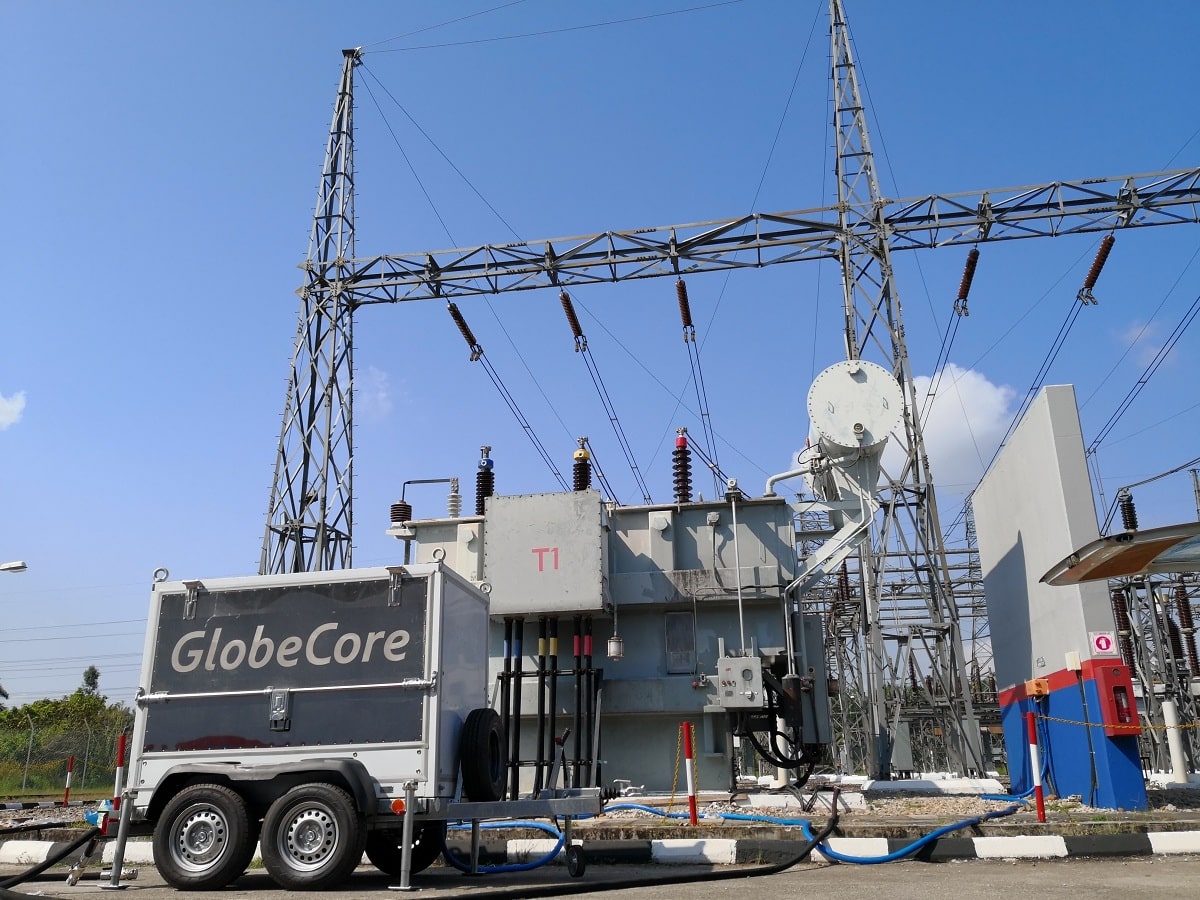Transformer Oil Change is most often warranted by the results of sample analysis. There are certain parameters that indicate that the oil is in very poor condition and further use may cause transformer failure. These are oil acid number, dielectric strength and dissipation factor.
Acid number shows the amount of acids in the transformer oil. It is measured in milligrams of potassium hydroxide necessary to neutralize all acids in one gram of oil. High acid number indicates that the oil has aged. Fresh oil has an acid number of 0.02-0.03 mg KOH/g. Acid number below 0.1 mg KOH/g is considered normal.
Dielectric strength is the ability of the oil to stop electrical breakdown, i.e. defines the the reliability of the entire electrical insulation system of the transformer. The specific standards vary depending on the type and application of the electrical equipment.
Dissipation factor is also referred as dielectric loss tangent. For fresh oil, this value is below 0.5%. Standard limits depend on transformer voltage rating. For 110-150 kV equipment, for instance, the dissipation factor must not exceed 12%, while for 750 kV and above it must remain below 3%.
Benefits and limitations of transformer oil change
If oil sample analysis shows that the oil has exceeded critical thresholds, one solution is to change the oil. Let us consider both the benefits and limitations of this process.
Transformer oil change is a slow process. Depending on transformer size, there may be tens or even hundreds of tons of oil in the transformer tank. First, the oil is drained from the transformer, then the transformer tank is washed to remove all remaining impurities and sludge. Then the tank is filled with new oil. However, two problems are not solved by oil change. First, even a thorough wash cannot completely clean the transformer, since some of the impurities remain in the cellulose insulation. When the transformer is filled with new oil, the process is reversed: the impurities in the solid insulation are dissolved in the oil, which accelerates its aging and significantle reduces its service life. Second, there is the problem of disposal of large volumes of oil oil. It must be done properly, and such disposal can be quite costly. But is there an alternative to transformer oil change?
Oil regeneration instead of transformer oil change
GlobeCore knows from experience that transformer oil change can be replaced with transformer oil regeneration.
In the general case, regeneration is the process of treating the oil by various physical or chemical methods to completely restore the important performance parameters of the insulating fluid. GlobeCore has developed and now manufactures special transformer oil regeneration equipment, the CMM-R type machines. They are made of several sections, which perform specific function, such as:
- degassing of oil;
- regeneration of oil;
- reactivation of saturated adsorbent;
- mixing of anti-oxidation additive into the oil.
The CMM-R units provide comprehensive transformer oil treatment. Regeneration, i.e. the process of removing oxidation and aging products and acids is performed with the help of Fuller’s earth adsorbent.
This machine can be connected directly to the transformer (which may remain energized). When the process is started, the oil circulates from the transformer and through the machine. After degassing, regeneration and inhibitor injection, the oil goes back to the transformer. The constant circulation washes impurities out of the transformer. The oil regeneration process solves both problems inherent with transformer oil change. No contaminants which accelerate aging of new oil remain in the transformer, and the oil can be used again without the need to dispose of it. This saves significant money and improves the reliability and transformers, increasing their lifetime.
Acid number and dissipation factor are reduced significantly by regeneration (which also increases the dielectric strength of the oil). Another noteworthy point is that most regeneration machines contain adsorbent that must be changed and disposed of after saturation with impurities. The CMM-R machines restore the capabilities of Fuller’s earth in a reactivation process without the need to change the adsorbent in the machine. Fuller’s earth can be reactivated as many as 300 times and used for regeneration of oil again. 300 reactivation cycles are equivalent of several years of CMM-R operation.

